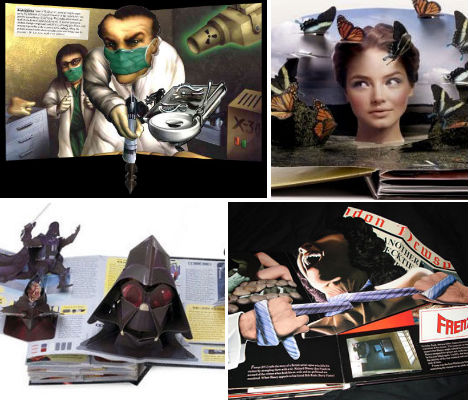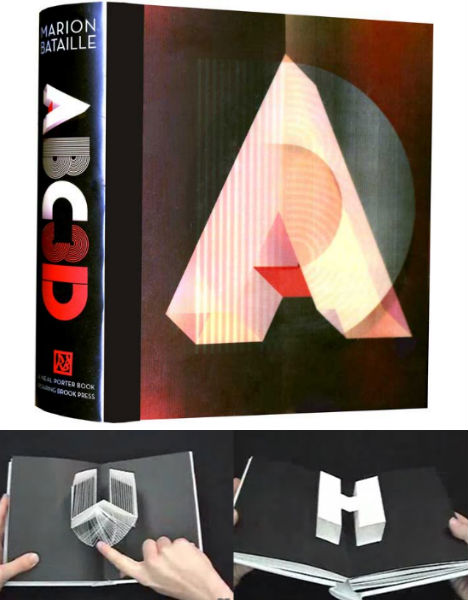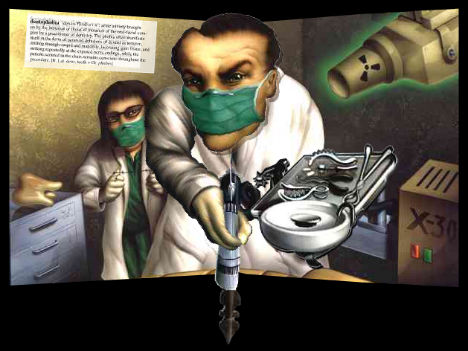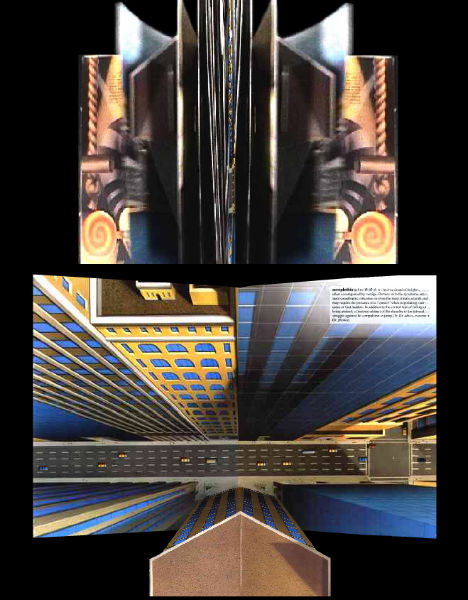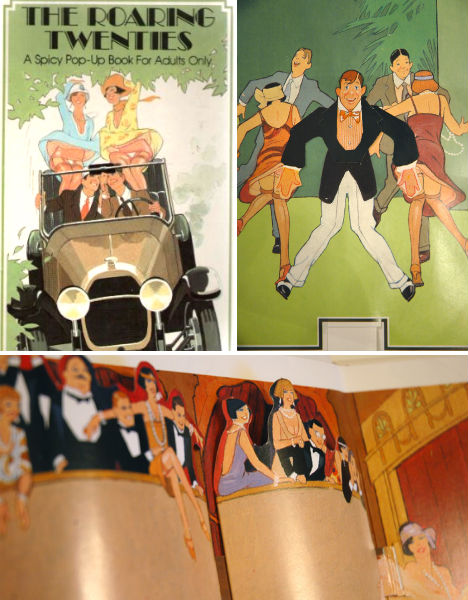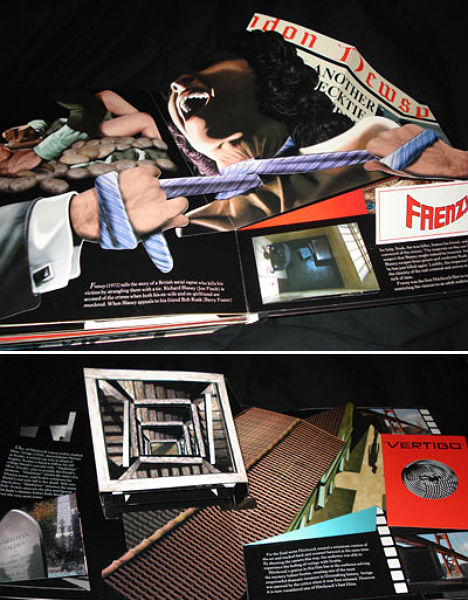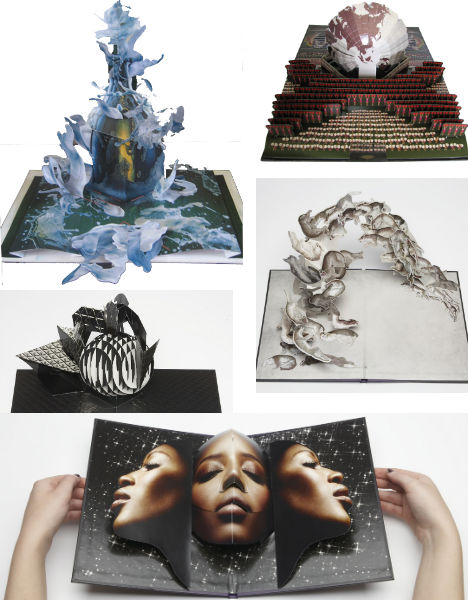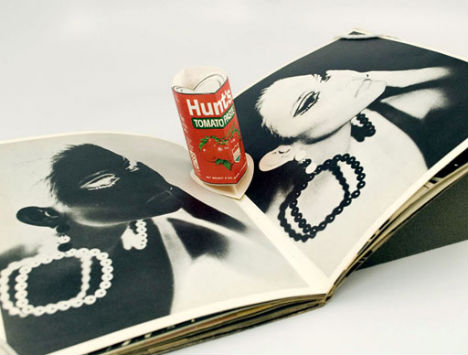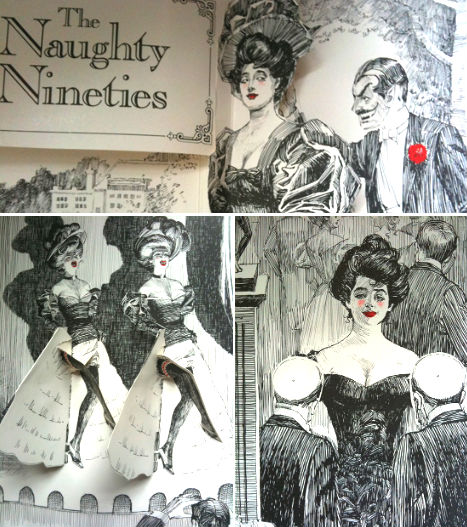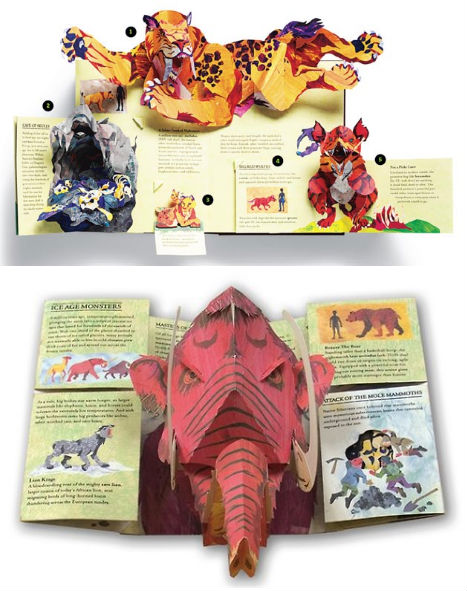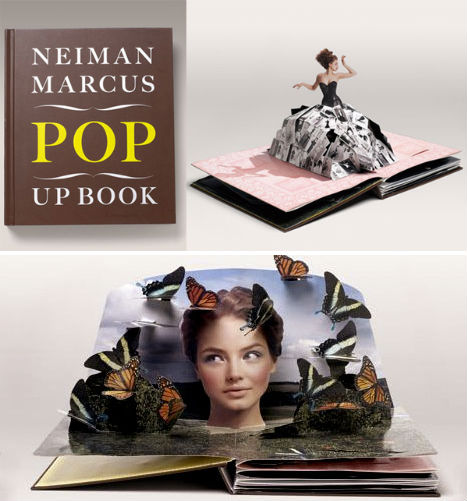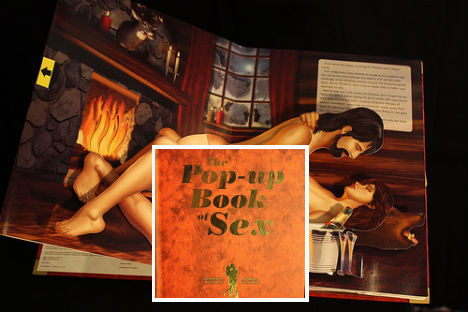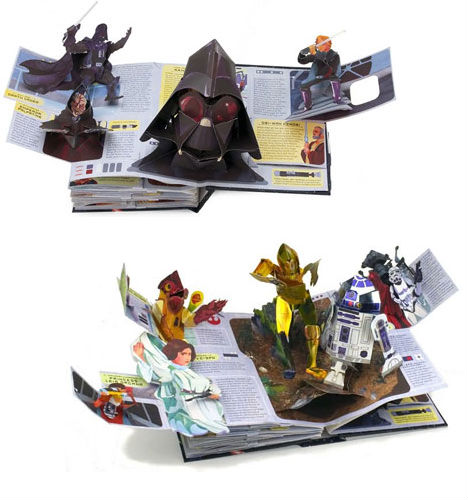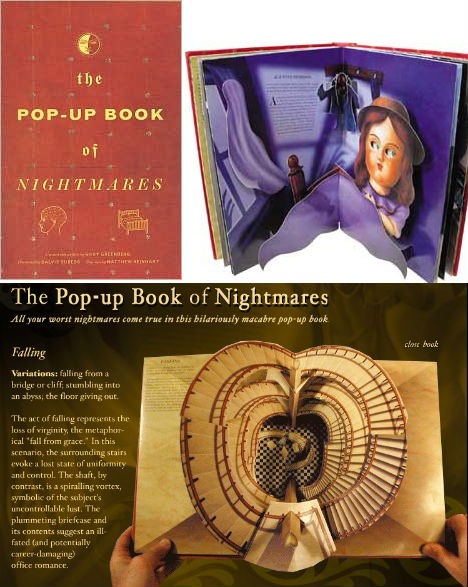 The Jungle Book by Matthew Reinhart (Little Simon, $26.95) is an eye-popping retelling of Rudyard Kipling's story of a boy raised by wolves. It follows Mowgli the Man Cub through a jungle teeming with life and wondrous surprises such as a sparkling golden idol and a towering, tiered temple overrun by monkeys.
The Jungle Book by Matthew Reinhart (Little Simon, $26.95) is an eye-popping retelling of Rudyard Kipling's story of a boy raised by wolves. It follows Mowgli the Man Cub through a jungle teeming with life and wondrous surprises such as a sparkling golden idol and a towering, tiered temple overrun by monkeys. Encyclopedia Prehistorica: Sharks and Other Sea Monsters by Robert Sabuda and Matthew Reinhart (Candlewick Press, $27.99). I wasn't sure how they could top last year'sEncyclopedia Prehistorica: Dinosaurs until I saw this cast of astonishing, spine-tingling creatures, which includes a fearsome open-jawed shark that noses right into your face.
Encyclopedia Prehistorica: Sharks and Other Sea Monsters by Robert Sabuda and Matthew Reinhart (Candlewick Press, $27.99). I wasn't sure how they could top last year'sEncyclopedia Prehistorica: Dinosaurs until I saw this cast of astonishing, spine-tingling creatures, which includes a fearsome open-jawed shark that noses right into your face. Blue 2 by David A. Carter (Simon & Schuster, $19.95). A vivid, lighthearted romp through shape and form that is like a gallery of modern, often whimsical, abstract sculptures. My favorite is the lacy pyramid composed of cut-out numbers and letters. On top of all that, like his last year's pop-up One Red Dot, this is a treasure hunt with a blue 2 hidden within each spread.
Blue 2 by David A. Carter (Simon & Schuster, $19.95). A vivid, lighthearted romp through shape and form that is like a gallery of modern, often whimsical, abstract sculptures. My favorite is the lacy pyramid composed of cut-out numbers and letters. On top of all that, like his last year's pop-up One Red Dot, this is a treasure hunt with a blue 2 hidden within each spread. Dragons by Keith Mosley and M.P. Robertson (Abrams Young Readers, $15.95) recounts five classic dragon tales from around the world. These mythological beasts spread their wings, unfurl their bodies and soar through the air.
Dragons by Keith Mosley and M.P. Robertson (Abrams Young Readers, $15.95) recounts five classic dragon tales from around the world. These mythological beasts spread their wings, unfurl their bodies and soar through the air. The Enchanted Doll House by Robyn Johnson (Handprint Books, $24.95). Every detail is thought out, starting with the flocked wallpaper-style cover and gold tassel that helps pull open this delightful book. Inside, four distinctive dollhouses dating back to the 16th century reveal their secrets and those of their occupants.
The Enchanted Doll House by Robyn Johnson (Handprint Books, $24.95). Every detail is thought out, starting with the flocked wallpaper-style cover and gold tassel that helps pull open this delightful book. Inside, four distinctive dollhouses dating back to the 16th century reveal their secrets and those of their occupants. The Snowmen Pop-Up Book by Caralyn Buehner, illustrated by Mark Buehner (Dial, $21.99) answers the question of what snowmen do at night via luminous vignettes in which frosty figures race under the stars, pummel each other with snowballs, whoosh down hills on sleds and return to their yards a little bit worse for the wear. It's a fun follow-up to their 2002 book, "The Snowmen At Night," which was a perfect candidate for pop-up treatment.
The Snowmen Pop-Up Book by Caralyn Buehner, illustrated by Mark Buehner (Dial, $21.99) answers the question of what snowmen do at night via luminous vignettes in which frosty figures race under the stars, pummel each other with snowballs, whoosh down hills on sleds and return to their yards a little bit worse for the wear. It's a fun follow-up to their 2002 book, "The Snowmen At Night," which was a perfect candidate for pop-up treatment. Mommy? is illustrated by Maurice Sendak (Scholastic, $24.95), based on a story by Arthur Yorinks and features the paper engineering of Matthew Reinhart but is pure Sendak: sweet and slightly scary. A toddler in jammies confronts a cast of classic movie monsters - a vampire, a werewolf, a mummy - until finding his mother behind the last closed door. And she's a dead ringer for Elsa Lancaster in the "Bride of Frankenstein."
Mommy? is illustrated by Maurice Sendak (Scholastic, $24.95), based on a story by Arthur Yorinks and features the paper engineering of Matthew Reinhart but is pure Sendak: sweet and slightly scary. A toddler in jammies confronts a cast of classic movie monsters - a vampire, a werewolf, a mummy - until finding his mother behind the last closed door. And she's a dead ringer for Elsa Lancaster in the "Bride of Frankenstein."Grown-up pop-ups
Adults are the real audience for a small but growing number of fun and funky pop-ups. Here are three of the year's must haves for the pop-culture mavens on your holiday list:
 Alfred Hitchcock: The Master of Suspense by Kees Moerbeek (Simon & Schuster, $29.95) puts a cinematic flourish - right down to creepy, moving body parts - on seven of the director's thrillers. Spoiler alert: plot details are revealed.
Alfred Hitchcock: The Master of Suspense by Kees Moerbeek (Simon & Schuster, $29.95) puts a cinematic flourish - right down to creepy, moving body parts - on seven of the director's thrillers. Spoiler alert: plot details are revealed. Graceland: An Interactive Pop-Up Tour by Chuck Murphy (Quirk Books, $40) starts with a foreword by widow Priscilla then moves room by room through the Memphis manse. There's plenty of insider dish and a surprisingly sober ending in the Meditation Garden, home to the graves of Elvis, his parents and one of his grandmothers.
Graceland: An Interactive Pop-Up Tour by Chuck Murphy (Quirk Books, $40) starts with a foreword by widow Priscilla then moves room by room through the Memphis manse. There's plenty of insider dish and a surprisingly sober ending in the Meditation Garden, home to the graves of Elvis, his parents and one of his grandmothers. The Pop-Up Book of Celebrity Meltdowns by Melcher Media (DK, $29.95) is check-out line worthy from its tacky, tabloid-style cover to pages on which Tom Cruise bounces on Oprah's couch and Janet Jackson's wardrobe manages to, ah, malfunction.
The Pop-Up Book of Celebrity Meltdowns by Melcher Media (DK, $29.95) is check-out line worthy from its tacky, tabloid-style cover to pages on which Tom Cruise bounces on Oprah's couch and Janet Jackson's wardrobe manages to, ah, malfunction.